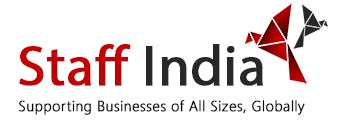The Cost of outsourcing work for Short Term Cost Reductions

Most organisations resort to outsourcing as a short-term tactical measure to lower costs rather than as a strategy in its own right.
That's according to a new report from Gartner who surveyed 945 individuals in North American, European and Asia/Pacific countries. Gartner concluded that while strategic IT outsourcing work can be an integral part of a company’s long-term business success, most organisations worldwide are still focused on tactical IT outsourcing as a means of reducing costs.
According to the survey 'controlling/reducing operating costs or improving efficiencies' was identified by more than half of the respondents in each region as the primary value they expected to receive from IT outsourcing. Efficiency deals are focused on cost control and, over time, cost reduction with the goal of maintaining consistency in service delivery. The survey found that fewer organisations outsourced their IT as a way to improve their business or their competitiveness.
"One of the great clashes in the market today is driven by the dominant use of outsourcing to cut costs, along with requirements for customised services," said Allie Young, research vice president for Gartner's Sourcing research group. "Only by foregoing customisation and moving to standardised services can the market effectively and reliably deliver the cost efficiency goals."
According to the survey, "achieve cost take-out" was identified as the foremost driver of IT outsourcing, with large organisations more frequently identifying this driver than small ones. Following cost take-out, respondents rated "achieve speed, agility, flexibility" and "gain access to technical expertise and skills" equally as leading drivers.
Overall, variations existed by vertical market and by geography. Financial services, government, process manufacturing, services, transportation and wholesale/retail organisations all ranked cost take-out as the top driver of IT outsourcing. North American respondents identified "improve IT service to end users" as their leading driver. The top two inhibitors to IT outsourcing focused on data security or privacy issues and concerns around the potentially high costs of outsourcing.
Outsourcing has come of age over the last decade, with resulting shifts in the pattern of employment. More and more organisations have outsourced both core and non-core functions to specialist service providers and, as services have passed one way, jobs and employees have passed the other way, from customers to service providers. But despite the maturity of the outsourcing model and its by now broad acceptance as a management tool to increase companies' efficiency and profitability, in many cases the biggest stumbling blocks to the smooth progress of an outsourcing project remain the HR issues.
"Companies have a growing concern about losing control of their intellectual capital and the business knowledge of key employees whose jobs or roles may be threatened by outsourcing work, particularly when downsizing occurs," Ms. Young said. "As part of a sourcing strategy, organisations must carefully examine the goals they wish to reach from outsourcing work, but equally their concerns. This exercise not only will help in developing a sourcing strategy, sourcing maxims and prioritisation of goals, but will educate various constituents in the organisation about realistic outcomes and possible false assumptions or misperceptions that it holds about outsourcing."
The Ethics and Morals of on Outsourcing...Read More
outsourcing work – Sucking the Sound of the Economic Cash Register...Read More
Back Office Fields
- Telemarketing
- Book Keeping
- Data Entry
- Virtual Assistant
- Transcripting
- Call Center Agents
- Email Chat and Support
- Help Desk
- Human Resources
- Proof Reading
IT Fields
- C++
- SQL
- Vb.net
- Web Design
- C#
- Asp.net
- Website Developer
- Java
- I.T Support
- Dreamweaver
General Fields
- Marketing
- SEO Internet Accounting
- Social Networking
- Blogging & Forums
- PPC Internet Marketers
- Technical Support
- Financial Analyst
- Advertising
- and many more...
- Please enquire
